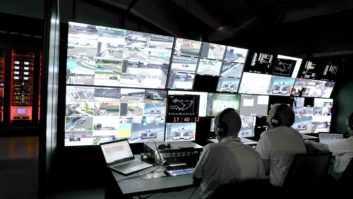In the light of TVBEurope’s story last week, BSkyB has moved to clarify its position on 2D-3D conversions, writes Adrian Pennington.
A Sky spokesperson admitted that the wording of Sky 3D specifications on its website was a little “stern” and that Sky is likely to revise its phrasing as a result of it being highlighted by TVBEurope.
“In order to maintain the highest quality on-screen product for customers, we’re asking for native 3D wherever possible, as this delivers the richest visual experience,” explained Chris Johns, chief engineer, BSkyB. “We are, however, continuing to monitor the techniques involved with 2D to 3D conversion, and as the technology continues to improve, we will consider conversions on a case-by-case basis, as a supplement to native programming.”
While Sky’s primary aim is to generate true stereoscopic content it is not ruling 2D-3D conversions out. Indeed there are areas where it may be impractical to include anything other than up-converted material. This might include archived content, select shots in a live OB environment or even Hollywood movies like Alice in Wonderland which include 3D conversions of 2D live action footage.
“It is not an absolute black and white scenario,” said John Kelly, JVC Professional Europe general manager. “The use of converted material in the right context is perfectly acceptable as long as it is clearly understood.”
Sky has been trailing JVC’s black box 2D-to-3D converter during its live 3D sports tests and Kelly says it is pleased with the results.
“The subject is analogous to mixing HD with SD,” said Kelly. “Clearly on an HD programme one aspires to have pristine HD material but in reality there may be a necessity to use archived content where up-converted material is acceptable.”
The specifications for Sky 3D state that ‘Conversions of 2D, HD content to 3D is not acceptable and may only be proposed by prior agreement with understanding of the editorial techniques and conversion process involved.’
“My interpretation [of their announcement] is that they are avoiding automated realtime systems,” said Martin Hobbs, executive producer, View-D which is a proprietary 2D-3D post production software developed by Prime Focus. “There are a number of different processes on the market and Sky is taking its time to make sure that what it is accepting is top of the game.”
View-D has been used to convert 2D action sequences into 3D for the Warner Bros. remake of Clash of the Titans.
“A lot of tent pole movies contain 2D-3D content because of the cost of setting up 3D rigs for live action and the lack of experienced stereographers and cinematographers,” said Hobbs. “There are a lot of hybrid 3D projects out there.”
According to Jim Spinella, founder and chief executive officer of HDlogix; “You have an industry in infancy and I think it’s shortsighted to discount the technology and say there is only one way of doing things.
“Innovation comes from small companies like ourselves and being able to keep an open mind to what’s out there,” Spinella added. “Sky has made a decision today but I am sure that when their customers ask for it, it [2D to 3D conversions] will be back.”
There may be no other way to achieve certain tricky outside broadcast shots than using up-converted processes.
“There is a demand to broadcast NASCAR racing in 3D but a core part of such a broadcast is the driver’s eye view of the racetrack,” said Spinella. “Putting 3D cameras on racing cars and ensuring that they don’t vibrate or shift the lenses out of line is a pretty impossible feat right now. But being able to take action from a 2D HD feed to create a 3D image from it will only lonely enhance the broadcast.”
HDlogix’s technology is about to move from R&D into commercial launch with the first set of contracts with content partners announced at NAB. Sky has not, to Spinella’s knowledge, seen it in action.
“It’s about winning over converts,” said Spinella. “We talk to a lot of ‘native 3D’ zealots and as they see the conversion technology and become more familiar with our technology they see that there is a role for it alongside native 3D at some live events. We’d love to be able to show it to Sky.”
Spinella also blamed the perceived poor quality of real time 2D-3D conversions which are a feature of 3DTV displays (from JVC, Toshiba and Samsung among others). “That technology is advancing but it is limited.”







